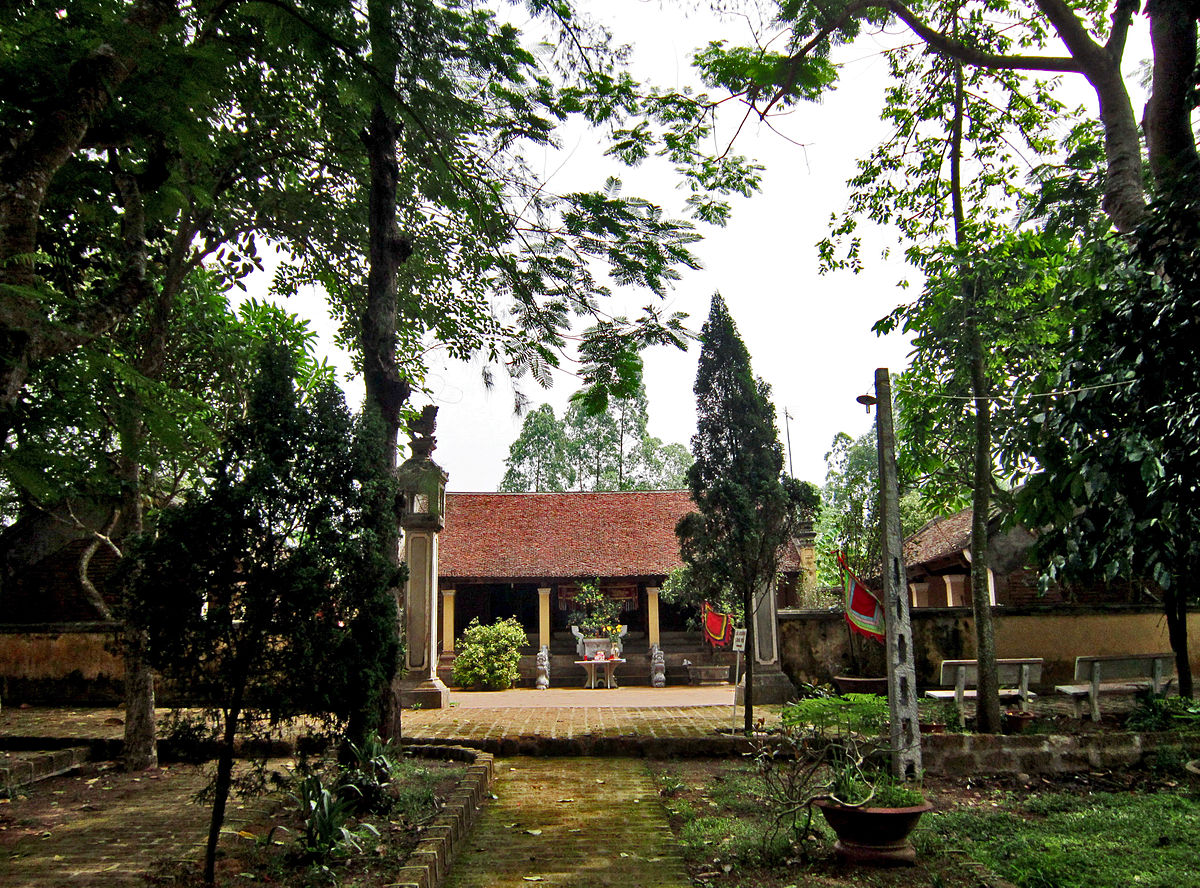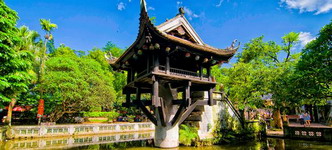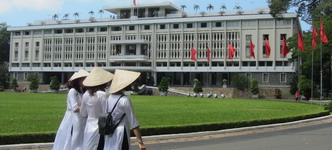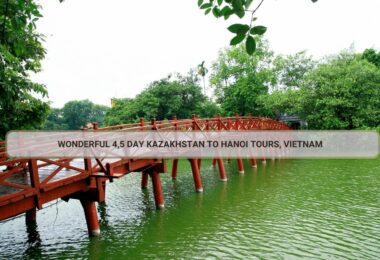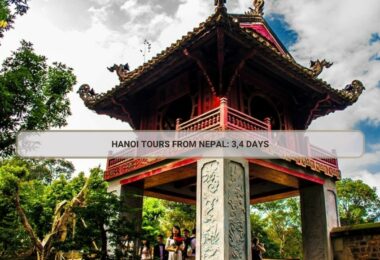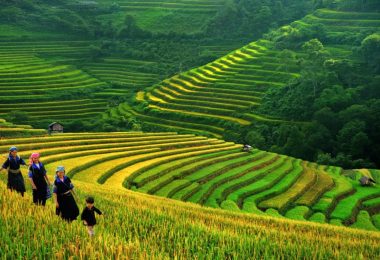Overview:
Duong Lam commune, Son Tay town is a place known as the land of “the genius of the people". Coming to this peaceful village, visitors will visit the temple and mausoleum of Ngo Quyen, a relic that has been classified as a national historical-cultural relic by the State, a place to worship a famous king in the nation’s history. , who is famous for his historic Bach Dang victory in 938, driving the Southern Han army out of the country, opening a new era of independence and self-reliance for the Vietnamese people.
Ngo Quyen temple and mausoleum were built on a high hill named Cam hill, facing east. The temple was built at the top, about 100m from the mausoleum. In front of the mausoleum is a large field located between two hillsides; a water source called the Lom pool flows into the Tich River; Next to it is Ho Gam hill, an old legend is that when Ngo Quyen was a child, he used to herd buffaloes, cut grass and practice martial arts. This is probably the most beautiful location of the old Duong Lam hamlet.
History & Religion:
Ngo Quyen Temple was built a long time ago and has been restored many times. The most recent renovation was during the reign of King Tu Duc (1848-1883). The temple has a rather modest scale, including Nghi Mon, Ta Mac, Huu Mac, Dai Bai (Tien Duong), and Hau Cung1. The temple is built of bricks, roofed with bricks, and surrounded by walls. Dai Bai temple is a 5-room house with a wooden frame, shown mainly in favor of durability and sanctity; In the middle, there is a painting with four Chinese characters, “The King is immortal" (King Ngo Quyen lives forever). Today, Dai Bai is also used as a gallery about the victory on Bach Dang River and Ngo Quyen’s life and career. Hau Cung is a house with 3 compartments, the wooden frame is decorated with dragons, flowers leaves… In the middle, there is a statue worshiping Ngo Quyen.
Architecture:
The tomb of King Ngo Quyen was built in the 27th year of Tu Duc (1874) and restored in the 2nd year of Minh Menh (1821). The mausoleum is built in the style of a stele house with a roof, about 1.5m high. In the middle of the mausoleum is a throne, inside there is a stone stele inscribed with four Chinese characters “Tien Ngo Vuong Lang" (Tomb of King Ngo Quyen). In particular, in the complex of Ngo Quyen’s temple and mausoleum, 18 ancient bamboo trees – it is said that Ngo Quyen tied elephants and horses – have been recognized as “heritage trees" at the national level.
Event:
Every year, on the 14th day of the 8th lunar month (the anniversary of King Ngo Quyen’s death), people in the region come here to remember his merits – the king “opened the country and declared himself king", ending more than 1,000 years of Northern domination. opening a new, independent and self-reliant era for the nation’s history.
Tours:



























